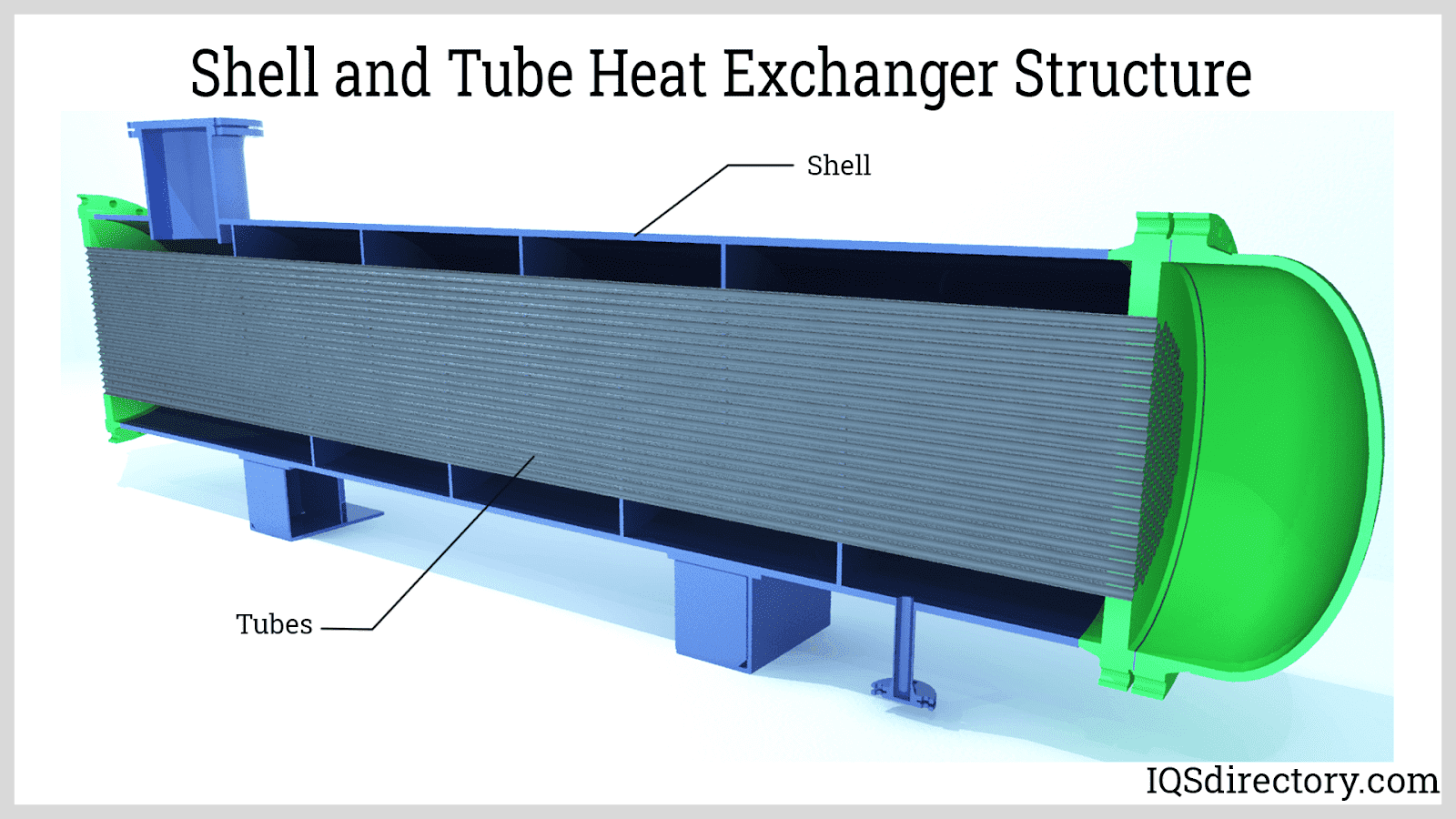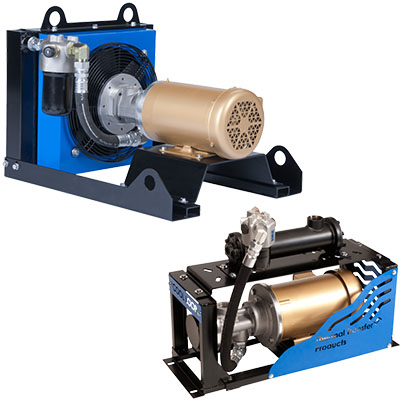A Deep Dive into Advanced CFD Modeling in DVS Heat Transfer Systems
Wiki Article
Advancements in Heat Transfer Solutions: What You Need to Know for Optimum Performance
Technologies in Heat transfer systems are transforming efficiency throughout different sectors. Advanced products like graphene and nanofluids promise considerable improvements in thermal conductivity. At the same time, the combination of IoT and equipment understanding uses opportunities for real-time tracking and boosted power performance. However, the landscape of thermal monitoring is swiftly evolving (DVS Heat Transfer Systems). Comprehending these advancements is crucial for accomplishing suitable system efficiency and sustainability in the future. What particular innovations are forming this change?Arising Products for Improved Heat Transfer

Advanced Heat Exchanger Designs
While standard Heat exchangers have actually served their function in different applications, progressed layouts are currently arising to satisfy the boosting needs for performance and performance. These innovative designs, such as plate, shell-and-tube, and finned-tube Heat exchangers, include improved surface locations and improved circulation patterns to enhance thermal transfer prices. Furthermore, portable styles enable for minimized room needs without jeopardizing performance. Advanced products, such as composites and corrosion-resistant alloys, furthermore boost longevity and efficiency under severe problems. Simulation innovations and computational liquid dynamics are significantly utilized to improve these designs, making certain peak Heat transfer features. As sectors seek to reduce power usage and make the most of result, the fostering of sophisticated Heat exchanger layouts is critical in attaining these goals.The Function of Nanotechnology in Heat Transfer
Nanotechnology plays an essential role in improving thermal conductivity within Heat transfer systems. By adjusting materials at the nanoscale, scientists have achieved considerable renovations in energy efficiency. These developments not only enhance performance yet additionally add to even more sustainable power services.Boosted Thermal Conductivity
Considerable improvements in thermal conductivity have arised via the application of nanotechnology, transforming Heat transfer systems throughout various sectors. By incorporating nanoparticles right into Heat transfer liquids and materials, scientists have actually attained impressive increases in thermal conductivity. These nanoparticles, such as carbon nanotubes, graphene, and steel oxides, enhance the Heat transfer homes because of their high surface and special thermal qualities. The resulting compounds show improved performance in applications ranging from electronic devices cooling systems to renewable resource innovations. The ability to customize the dimension, shape, and composition of nanoparticles permits for maximized thermal management options. Therefore, nanotechnology remains to play a crucial function in the development of much more effective and reliable Heat transfer systems, paving the method for enhanced industrial applications.
Energy Effectiveness Improvements

Combination of IoT in Heat Transfer Solutions
The assimilation of IoT in Heat transfer systems introduces the implementation of wise sensors that improve operational effectiveness. These sensors make it possible for real-time information surveillance, allowing for instant adjustments and optimizations. This technical advancement has the potential to considerably improve performance and energy monitoring in Heat transfer applications.get redirected here
Smart Sensors Implementation
As Heat transfer systems advance, the combination of smart sensing units with the Net of Points (IoT) has actually become a transformative strategy. These sensors make it possible for real-time tracking of stress, temperature, and flow prices, improving system performance and dependability. By gathering and transferring data, they promote proactive upkeep, reducing the threat of system failings. In addition, smart sensing units contribute to power cost savings by refining functional parameters based on environmental conditions. Their capability to assess anomalies and trends enables for notified decision-making, ensuring peak efficiency of Heat transfer systems. As sectors progressively adopt this technology, the application of wise sensors stands to transform exactly how Heat transfer systems are handled, leading the way for better sustainability and boosted performance end results.Real-Time Data Tracking
Just how can real-time data monitoring improve the performance of Heat transfer systems? By incorporating Net of Things (IoT) innovation, Heat transfer systems can leverage continuous data collection from clever sensing units. This real-time tracking permits for instant evaluation of circulation, stress, and temperature level prices, making it possible for operators to recognize inefficiencies quickly. Subsequently, modifications can be made to enhance efficiency, decrease power intake, and expand devices life expectancy. In addition, predictive upkeep can be executed, lessening unforeseen downtime and pricey fixings. The capacity to envision performance metrics with control panels improves decision-making, cultivating an aggressive strategy to system management. Inevitably, real-time data monitoring not only enhances operational performance however likewise adds to sustainability objectives within commercial procedures.Energy Efficiency and Sustainability Trends
Power efficiency and sustainability fads are improving the landscape of Heat transfer systems, driving innovation and conformity throughout different markets. Organizations are progressively focusing on energy-efficient designs to lower operational expenses and minimize ecological influences. The integration of renewable resource resources is coming to be more common, allowing Heat transfer systems to run sustainably while meeting governing demands. Furthermore, advancements in products and technologies advertise lower energy consumption and enhance total performance. Lifecycle assessments are also acquiring grip, allowing firms to review the environmental impact of Heat transfer systems from manufacturing to disposal. This emphasis on sustainability not only supports company duty yet also settings companies competitively in a market where customers increasingly favor environment-friendly solutions. As a result, energy efficiency and sustainability continue to be vital factors to consider for future advancements in Heat transfer modern technology.Innovations in Thermal Administration Solutions
While the demand for effective imp source Heat transfer remains to climb, innovations in thermal management services are emerging to deal with both performance and sustainability challenges. Advanced materials, such as phase modification materials and nanofluids, are being created to enhance Heat transfer performance - DVS Heat Transfer Systems. These products improve thermal conductivity and permit better temperature level law in different applications. Furthermore, innovations like active thermal control systems are gaining traction, making it possible for real-time changes to handle Heat flow successfully. These systems add to energy financial savings and decrease the ecological impact of thermal procedures. The integration of IoT in thermal administration helps with tracking and predictive upkeep, guaranteeing optimized efficiency and long life of Heat transfer systems. On the whole, these developments represent substantial strides toward more sustainable thermal management methodsFuture Instructions in Heat Transfer Modern Technology
Emerging improvements in thermal monitoring solutions signal a promising future for Heat transfer technology. Scientists are increasingly concentrating on creating materials with remarkable thermal conductivity and enhanced energy performance. Advancements such as nanofluids, which include suspended nanoparticles, use significant enhancements in Heat transfer performance. Additionally, the combination of wise materials that adapt to varying temperature problems is getting grip, permitting even more receptive and efficient systems. The surge of additive production techniques is also go to this site allowing the layout of complex Heat exchanger geometries that maximize fluid flow. In addition, the execution of device understanding formulas is prepared for to revolutionize the optimization of Heat transfer systems, promoting predictive upkeep and efficiency improvement. Collectively, these developments are positioned to change the landscape of Heat transfer innovations in numerous sectors.
Regularly Asked Inquiries

How Do I Select the Right Heat Transfer System for My Application?
Choosing the appropriate Heat transfer system entails examining application requirements, consisting of temperature ranges, liquid homes, and effectiveness demands. Examining system types, upkeep factors to consider, and cost-effectiveness additionally plays a vital function in making an informed decision.What Are the Maintenance Demands for Advanced Heat Exchangers?
Upkeep needs for innovative Heat exchangers normally consist of regular inspections, keeping track of for leaks, cleaning of surfaces, and ensuring excellent circulation prices. Adhering to manufacturer standards guarantees reliable operation and extends the devices's lifespan.
Exactly How Do Ecological Aspects Impact Heat Transfer Performance?
Ecological factors substantially affect Heat transfer performance. Variations in humidity, air movement, and temperature level impact thermal conductivity and convective Heat transfer, inevitably affecting system performance and demanding consideration during the style and operation of Heat transfer systems.What Security Criteria Apply to Heat Transfer Systems?
Security criteria for Heat transfer systems commonly include standards from companies such as ASME and ASTM. DVS Heat Transfer Systems. These criteria address materials, layout, and operational methods to guarantee integrity, performance, and protection versus threats in various applications
Just How Can I Repair Typical Heat Transfer System Issues?
Troubleshooting common Heat transfer system issues includes looking for leakages, ensuring correct liquid circulation, inspecting insulation stability, and verifying temperature differentials. Recognizing these variables can assist maintain system effectiveness and prevent additional problems.Nanotechnology plays an important function in improving thermal conductivity within Heat transfer systems. Significant developments in thermal conductivity have actually emerged via the application of nanotechnology, reinventing Heat transfer systems throughout numerous markets. Advancements in thermal conductivity via nanotechnology have actually paved the means for amazing improvements in energy efficiency within Heat transfer systems. Energy performance and sustainability trends are reshaping the landscape of Heat transfer systems, driving innovation and compliance across different markets. The integration of IoT in thermal management promotes monitoring and predictive upkeep, making sure maximized efficiency and longevity of Heat transfer systems.
Report this wiki page